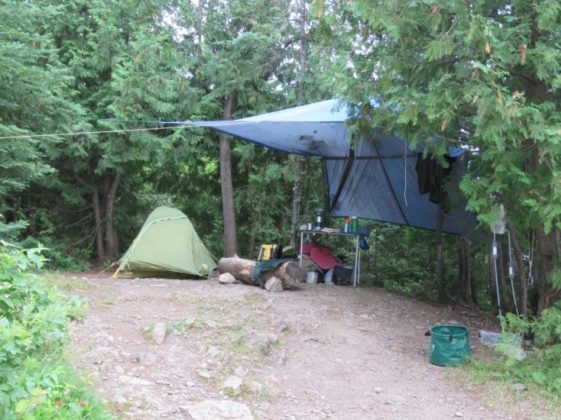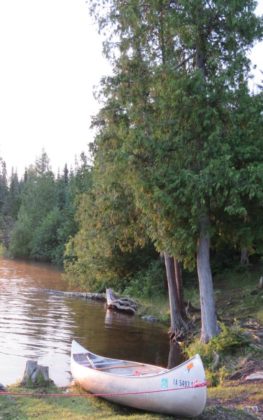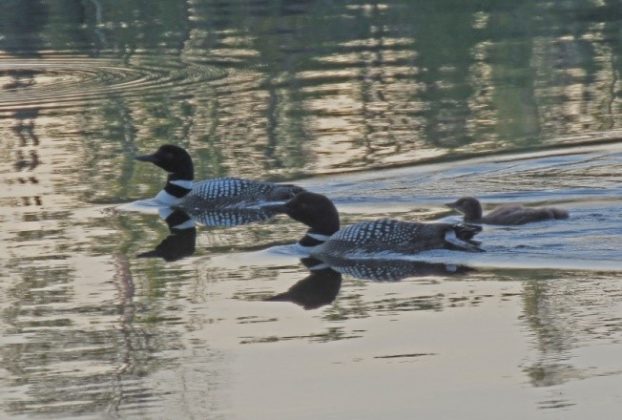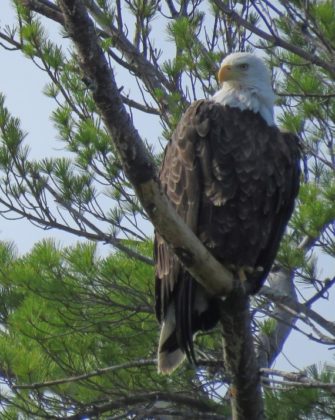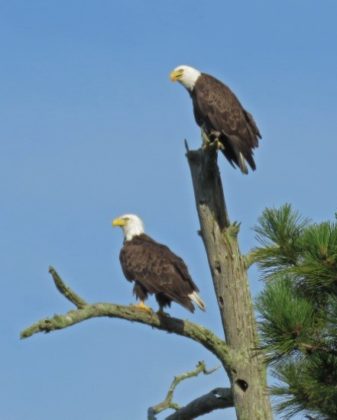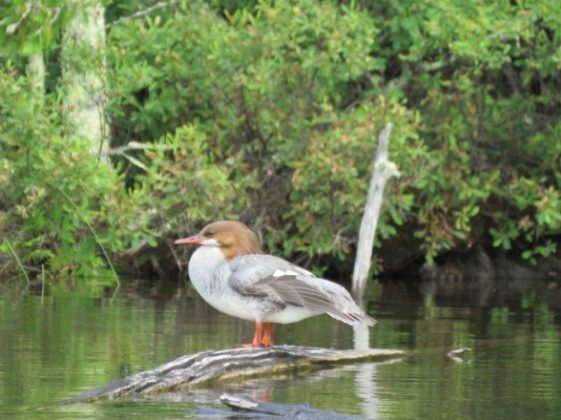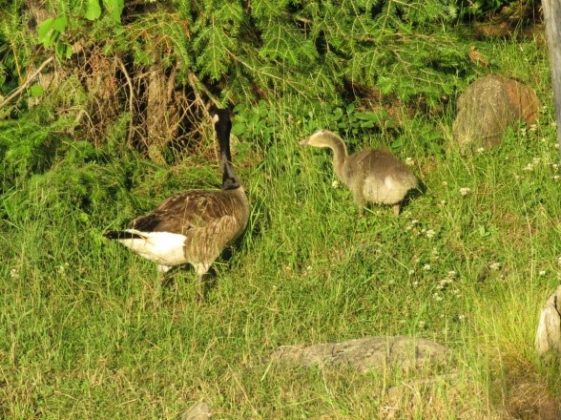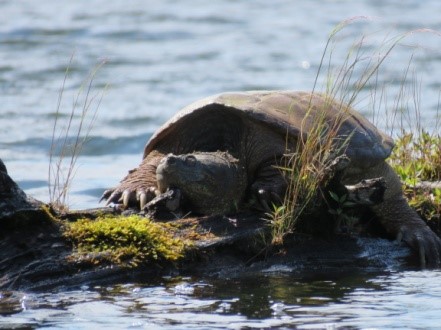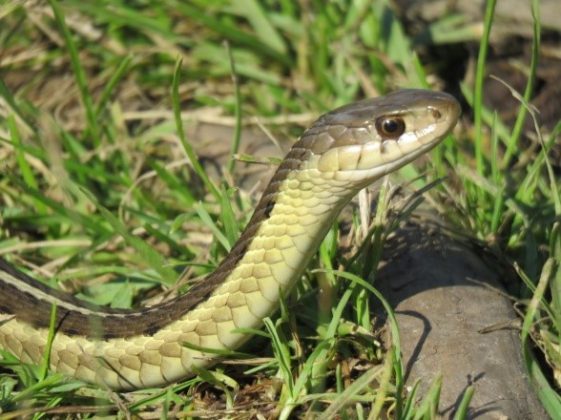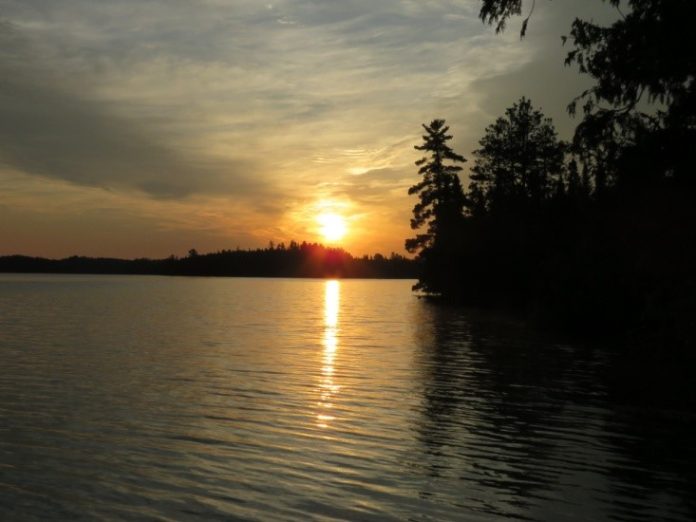
The old saying, “to be up the creek without a paddle,” applied to me and my camping partner Steve when we took a trip this summer to the Boundary Waters Canoe Area in northern Minnesota.
We camped and fished on Birch Lake, which lies on the boundary between the U.S. and Canada. Just a few minutes after I started paddling, I noticed that the wooden ash paddle I was using made cracking sounds and had an unusual feel in the middle of the shaft when I paddled hard. I examined it and saw a crack in the center of the handle!
We got out the duct tape and wrapped it around the broken area. Steve suggested we put a splint on it for extra strength. We had an extra tent pole, so we attached it to the paddle with duct tape. It was slightly awkward to hold but it worked fine. However, I was careful not to apply too much force on the shaft when I was paddling.
The next day we had a problem with the second paddle. It has an aluminum handle with a plastic blade. The first night when we were hanging our food bag in a tree, I was pulling on the rope to hoist the bag, and Steve was under it pushing it up with the paddle. Perhaps he was pushing too hard, because some cracks formed at the top part of the blade around the metal shaft.
Duct tape was used again to make a temporary repair. We did not use the aluminum paddle until the day we paddled out. In the meantime, we used a small emergency telescoping paddle that I always take on a canoe trip. It was short, and the blade was small, making it inefficient to paddle. However, it served the purpose.
Along with broken paddles, the other problem we had was the very hot weather. My thermometer registered above 90 degrees for four days. During the heat of midday, I napped and read in my hammock, and at mid-afternoon on most days I took a swim in the lake to cool off and rinse the sweat away. At night I slept on top of my sleeping bag, not in it.
Wednesday, our middle day on the lake, it rained all morning, at times very hard. At noon the heavy rain stopped, changing to a heavy drizzle, and strong winds blew across the lake, producing whitecaps on the water. We stayed in camp all day Wednesday, drinking hot chocolate and reading under our awning.
I was surprised to see people paddling on the lake during this storm. They were covered with ponchos, paddling with their heads down as they went into the wind and rain and worked their way west toward the portage. It must have been challenging because their canoes were loaded with gear. Maybe they had a time issue and had to leave. I would not want to be on the lake in that kind of weather.
In the evening the wind abated, but a light rain continued to fall well after dark. The storm also brought much cooler temperatures to the area. At bed time, I closed my tent, zipped my sleeping bag around me and fell asleep with the sound of rain falling on my tent. The morning came with a beautiful clear sunrise. Rays of red-orange sunlight were filtered by the trees, and steam was rising off the calm lake.
The hot weather made for poor fishing, In fact, it was awful. I only caught one small yellow perch, and it was about the same size as the lure I was using for bait. I used every type of bait I had in my tackle box. I fished deep and then shallow. I fished near submerged logs and brush piles, along the edge of weed beds, on rock reefs and trolled slowly in the middle of the lake.
All this was to no avail. The other campers we spoke to said they were not catching fish either, and some were using live bait. It was just too hot, and the fish were not hungry.
It was the wildlife, birds and beautiful scenery that made the trip interesting. We had the usual chipmunks that frequently scampered through our camp looking for crumbs of food. A red squirrel always seemed to be in a nearby tree, scolding us with his high-pitched chatter.
We saw at least three families of loons that had one baby each. They would call at all hours of the day and night. A loon’s call during the night is an eerie sound when it reverberates off the water.
On Saturday, while we were waiting to be picked up by our tow boat, we saw a bald eagle drop down between the two adult loons, grab a baby loon and then fly up into a dead tree. The parents screamed and squawked for a half hour, but it did them no good. Their baby was the eagle’s lunch. It was sad to see the baby get taken, but that is nature. Some things must die so others can live, and all things that live must die in time.
There was a pair of bald eagles that probably had a nest on the shore across from our camp. They always seemed to be near. We also saw an immature eagle flying over us twice. I took several pictures of an adult eagle when we paddled past the tree where it was perched. The eagle looked down from his perch, seemingly unconcerned and watching us pass below.
Eagles are common now and are no longer on the endangered species list. I still enjoying seeing them, especially up close and in a beautiful setting such as northern Minnesota. Maybe these eagles will migrate to the Iowa section of the Mississippi River this winter and feed below the dams.
On our second day in the BWCA, Steve noted that we had not seen any Canada geese. That evening while we were having supper, a family of geese swam to our campsite. There was a pair of adults and one gosling, still wearing its yellow down feathers. I thought it was unusual for the pair to have only one offspring. Perhaps the others were preyed upon.
One of the adult geese stayed in the water at the shore line and kept an eye on us while the other adult bird and the baby walked on the land and began feeding on the grass. The adult feeding on the shore would occasionally glance at us, but the baby was going after the grass like a weed-eater machine. They would grab the seed head in their beaks and strip off the seeds.
After a few minutes, the goose that was on guard in the water must have sensed that we would not harm its family because it came on the shore and started to feed on the grass, too.
In one of the bays of the lake, we spotted a merganser duck perched on a log, preening its feathers. It seldom sat still, but it did a few times, just long enough for a photo.
We saw lots of turtles, long-snouted soft-shells, painted turtles and one very large snapping turtle sunning on a log. It had huge claws that looked as long as my fingers.
During the nighttime we heard a chorus of mink frogs calling. Mink frogs look similar to small bull frogs, but they have a different call. There was a large garter snake in our camp area. We saw it twice, crawling around the edge of the lake. Maybe it was looking for a frog dinner. I was able to get some good photos of it before it crawled into a hollow stump.
Birch Lake is a popular lake because of its easy access and no portages for a long distance. The lake is seven miles long, with a northeast to southwest orientation. There are several portages that go into smaller lakes to the south.
During our stay on the lake there was a continual stream of canoes going past our campsite. There must have been more people in the canoes than there were campsites available for them. They must have been traveling on to other lakes.
We did not catch any fish, but it was a good trip. My adventures in the Boundary Waters always recharges my spirit. I enjoy the entire experience — canoeing on the water, reeling in a feisty northern pike, hearing the call of a loon, sitting around a campfire telling stories with good friends or listening to the rain fall on my tent.
Maybe next year the fishing will be better.





